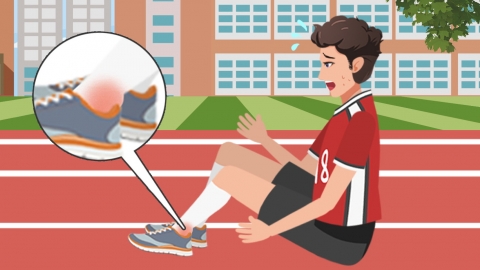How to reduce swelling from a sprained ankle
Ankle sprain swelling may be caused by improper exercise, uneven ground surfaces, soft tissue injury, capillary rupture, fractures, and other factors. It is usually treated through rest, cold compresses, warm compresses, compression bandages, elevating the affected limb, medication, and physical therapy to reduce swelling. If abnormalities occur or symptoms worsen, timely medical attention is recommended. Detailed analysis is as follows:

1. Improper exercise: Incorrect posture or excessive force during exercise may cause ankle muscle or ligament strain, leading to sprain and swelling. Immediately stop the activity, rest the injured area, apply cold compresses to reduce swelling and pain, and later apply warm compresses and undergo physical therapy at the appropriate time to promote recovery.
2. Uneven ground: Walking or running on uneven surfaces can easily cause loss of balance in the foot, resulting in sprain and swelling. It is recommended to rest, apply cold compresses, warm compresses, and physical therapy. Meanwhile, attention should be paid to choosing flat, dry, and safe walking environments to reduce the risk of sprains.
3. Soft tissue injury: During a sprain, the muscles, ligaments, or other soft tissues of the foot may be stretched or torn, causing small blood vessels to rupture. Blood and bodily fluids may seep into surrounding tissues, causing swelling. This may be accompanied by symptoms such as pain and joint instability. Treatment should follow the RICE principle—rest, ice, elevation, and compression—to reduce inflammation and swelling. Appropriate rest and compression bandaging also help control swelling.
4. Capillary rupture: Severe sprains may damage capillaries, leading to capillary rupture, bleeding, subcutaneous hematoma, and bruising, which can cause swelling. It is recommended to apply cold compresses within 72 hours after injury to reduce swelling and pain. Subsequently, warm compresses may be applied according to the specific condition to promote blood circulation and absorption of hematomas. Under a doctor's guidance, cupping therapy, acupuncture, and other methods may also be used to alleviate physical discomfort.
5. Fracture: During a foot sprain, if the external force is too strong, it may cause bone fractures. Fractures can lead to surrounding soft tissue damage and bleeding, resulting in swelling. Symptoms may include pain, deformity, and limited mobility. Treatment may involve conservative approaches such as rest and immobilization, or surgical interventions such as fracture reduction and internal fixation. Rehabilitation therapy is also needed to promote bone healing.
In daily life, attention should be paid to protecting the feet to avoid excessive exercise and injuries. When engaging in sports or outdoor activities, appropriate footwear and suitable ground surfaces should be selected to reduce the risk of sprains.





